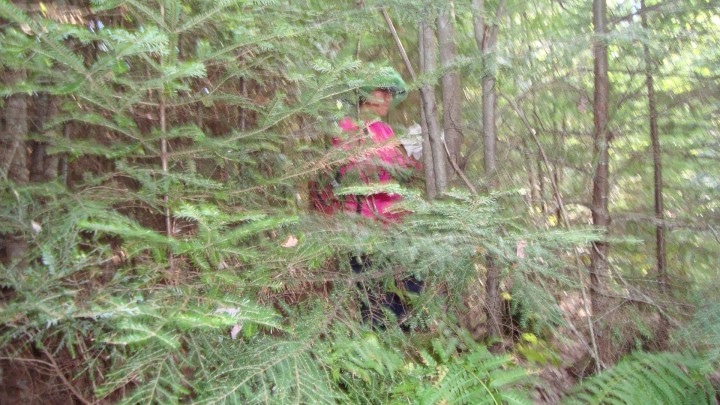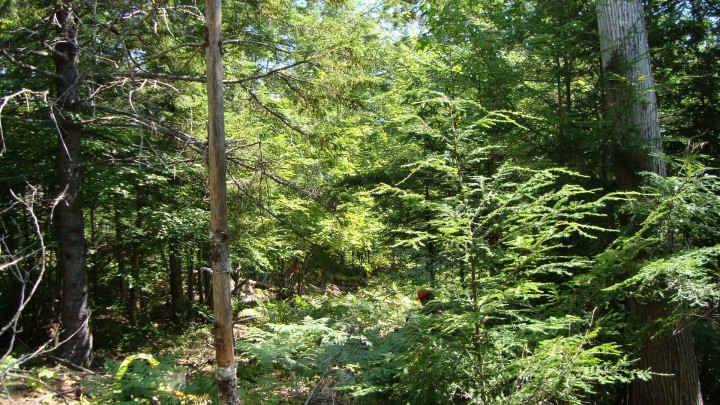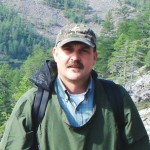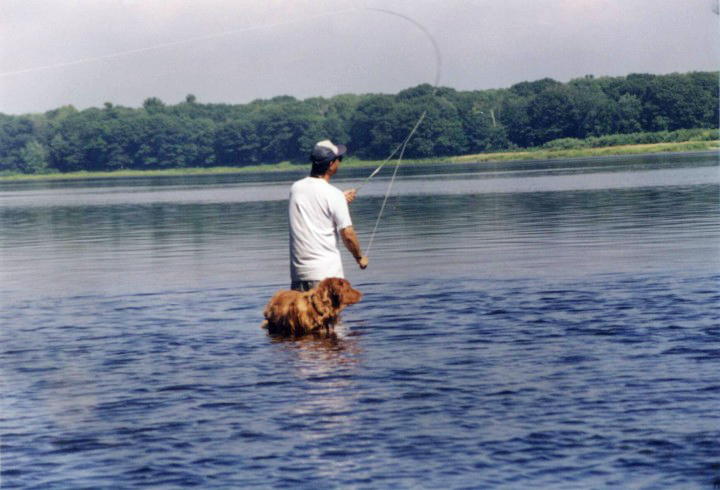

Penobscot Experimental Forest
Temp: 91 °F (record 92 °F, 1987; average 78 °F) Humidity: 51 % Wind Speed 14 MPH Partly Cloudy
From Dr. Jon Ranson:
I’m a tired puppy right now. We started early today and put in a long, long day. We got a lot of measurements done. It’s delightful to be here and we are making good progress towards our goals.
The forest is very beautiful and also very diverse, with a lot of different species and a variety of sizes of trees. Even the understory is diverse. In some areas we have open, mossy ground to walk on. In others we push through scrubby undergrowth and other places its wet enough that you can sink into muck up to your ankles.

Penobscot Experimental Forest, Bradley ME
Temperature: 89 ° F Humidity: 73% Wind: Calm Hazy, hot and humid
From Dr. Jon Ranson: Greetings from Maine! The North Woods are fabulous as always and I’m excited to be here again. I’ve been coming to Maine for field work since 1989 so when I see these forests, it’s a little bit like coming back to a second home.
Today was orientation day. We took time to meet each other, learn about the sites, and refresh our measuring skills. It was great to reconnect with old friends and to meet the new faces in this crowd. And we do have a little bit of a crowd here. About twenty six folks, give or take a few, will be with us during the next two weeks. Some will stay only a few days, but many will be here the whole two weeks.

Biographies
 Dr. Jon Ranson is an earth scientist specializing in radar, lidar and remote sensing. He uses these tools for studying vegetation type and biomass in ecosystem research. He is NASA Goddard Space Flight Center DESDynI Lidar Project Scientist and Head of the NASA GFSC Biospheric Sciences Branch in Greenbelt, Maryland. Under his guidance the Branch is advancing the use of satellite technology to study the carbon cycle and ecosystem science. Dr. Ranson is traveling to Maine in support of the DESDynI mission. He will help collect basic forest measurements in order to validate data recently acquired from aircraft lidar and radar in these forests, so that the algorithms for remote sensing can be improved and the carbon budget better understood. Dr. Ranson has participated in numerous field campaigns in the United States, Canada and Siberia to improve our ability to measure and monitor vegetated ecosystems from space. He enjoys hiking, birding, music and outdoor cooking.
Dr. Jon Ranson is an earth scientist specializing in radar, lidar and remote sensing. He uses these tools for studying vegetation type and biomass in ecosystem research. He is NASA Goddard Space Flight Center DESDynI Lidar Project Scientist and Head of the NASA GFSC Biospheric Sciences Branch in Greenbelt, Maryland. Under his guidance the Branch is advancing the use of satellite technology to study the carbon cycle and ecosystem science. Dr. Ranson is traveling to Maine in support of the DESDynI mission. He will help collect basic forest measurements in order to validate data recently acquired from aircraft lidar and radar in these forests, so that the algorithms for remote sensing can be improved and the carbon budget better understood. Dr. Ranson has participated in numerous field campaigns in the United States, Canada and Siberia to improve our ability to measure and monitor vegetated ecosystems from space. He enjoys hiking, birding, music and outdoor cooking.
To many, Maine evokes images of rugged coastlines, bold light houses and bright red, buttered lobster. The draw of the water is so strong that the Maine Office of Tourism’s website currently sports all coastal photographs. Their sole image of the woods is only a backdrop to white water rafting. Despite the beauty of the summer coastlines, the heart of Maine lies in her interior, in the woods. Even after decades of logging and development, 90% of Maine is still forested. The state nickname is The Pine Tree State and the flag proudly displays a large, green pine tree in its center.
Coastlines may call to tourists, but it is the forested interior that fascinates ecosystem scientists interested in remote sensing, such as the NASA-led team, who have traveled from throughout the United States and Canada in order to work in Maine from August 18 through 29, 2009. This team, led by Dr. Jon Ranson, Goddard DESDynI Lidar Project Scientist, NASA Goddard Space Flight Center, Greenbelt, Maryland is focused on making accurate measurements of forest vegetation in order to validate remote sensing data recently collected from lidar and radar. The data will be used to improve algorithms for the remote sensors for NASA’s DESDynI mission, which is due to launch in 2017.

In thinking back over the past two weeks here in Galapagos and going over the nearly 1,300 photographs that I have taken, I wanted to select a few that while perhaps not the best pictures in an artistic sense, are the best at capturing the things that have touched me the most and that will linger long after my time here has past. So I’ll take this opportunity to share with you just a few of my favorite things about this truly magical place.
The People
This little girl who I met on the ferry on the day that I arrived in Galapagos typifies the spirit of the people of Galapagos. There is a palpable joy of recognizing that they are living in such a special place that I felt from everyone that I met and a realization of just how fragile a place it is. She represents the future of Galapagos but one which has a firm appreciation of its past and its special place in the world.
